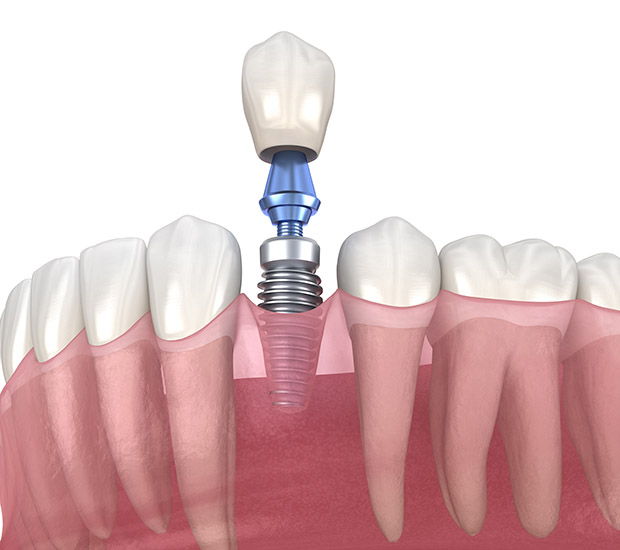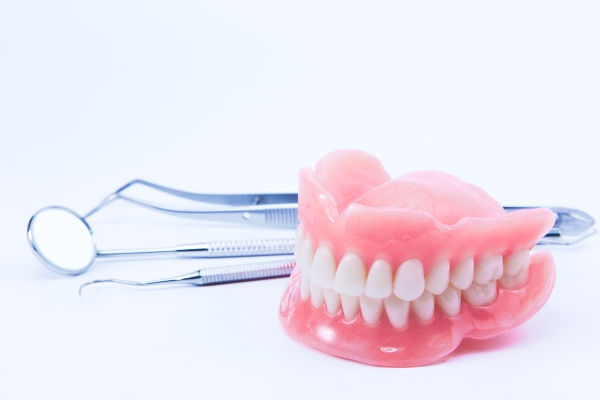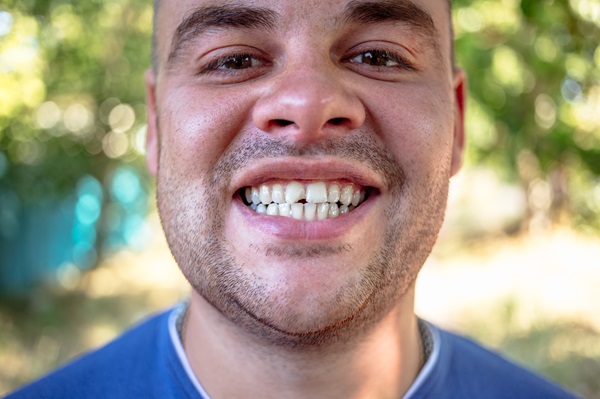Dental ImplantsTucson, AZ
Dental implants are replacement tooth roots that support a dental crown, bridge, or denture and prevent further jawbone loss. The implantation process is classified as both prosthetic and cosmetic dentistry. Losing teeth may make a person feel embarrassed to smile or speak in public. It may also disrupt normal biting patterns, which can negatively impact eating habits and increase the risk of secondary health issues, including malnutrition.
Since they restore natural tooth roots, dental implants enable patients to consume the foods that they like without limiting their diets. They also aid in stimulating and maintaining the jawbone, which helps prevent bone loss and provides structural support for the face.
Changes/Cancellation? - You must CALL at least 48 business hours prior to your scheduled appointment and speak with a team member to avoid charges.
We cannot accept appointment change requests via voicemail, email or text for your protection.
Initial consultation for dental implants
A consultation with the dentist is necessary to decide whether dental implants are a good option. During this visit, the dentist will check the health of the patient’s gums and teeth and the quality and amount of their bone tissue. To do this, X-rays and CT scans may be used to check for adequate bone structure and to pinpoint the ideal implant placement.
The dentist will recommend the best course of action based on the state of the patient’s oral tissues, dental hygiene and personal habits, and dedication to following aftercare guidelines. Smaller-diameter implants (also called mini-implants) and bone or soft tissue grafts may be necessary for individuals with inadequate bone or gum tissue.
The dentist will provide an estimate of the treatment duration, number of appointments, and what to anticipate after each step. During the consultation, there may also be discussions about sedation dentistry and local anesthetic to numb the affected and surrounding regions. At this consultation, patients will also learn about the price of the dental implant procedure. The cost of care may vary widely depending on the treatment type and any additional procedures required.
Before the implant placement procedure
Any preexisting oral health conditions must be addressed before implantation. Issues with the teeth and gums, such as cavities and gum disease, may reduce the effectiveness of dental care. Smokers tend to have a higher rate of dental problems than nonsmokers, so the dentist will likely recommend quitting the habit. Dental implants fuse with the jawbone via osseointegration, and smoking can be detrimental to that process. The patient's unique treatment plan may get underway after the dentist determines that their mouth is healthy enough for the implants.
The dental implant procedure
The teeth replaced by dental implants look and feel much like natural teeth. The structural and functional connection between the implant and the jawbone contributes to this aesthetic outcome. In most cases, the treatment may be completed in a single sitting, though osseointegration must occur over time.
The implant becomes securely anchored in the jaw via osseointegration. After six weeks to six months of osseointegration, the implant should have fully anchored and healed, and the dentist can restore the implant with a crown, bridge, or hybrid denture.
The dental implant is only possible after bone development is complete, usually around the time of adulthood. Patients with active diabetes, cancer, or periodontal disease may need further therapy before the implant procedure.
Conditioning the jaw for an implant
The typical dental implant restoration consists of a titanium screw and a porcelain crown. The dentist will create a hole in the jaw area with the missing tooth, which will hold the titanium implant fixture. Dentists need a high level of competence and knowledge to drill the pilot hole and size the jawbone to protect the delicate jaw and facial tissues, including the inferior alveolar nerve in the lower jaw. Dentists often utilize surgical guides made from CT scans to help them place implants.
Placing the implant
After a pilot hole is drilled into the jaw at the desired location, the hole is expanded gradually to accommodate the implant screw. After the implant is placed, the gum tissue is sutured over it, and a cover screw is added for protection while the site heals and osseointegrates. In around six months, after the area has healed, the dentist will uncover the implant and install an abutment, which holds the crown or tooth-like replacement.
In certain cases, the abutment may be fastened at the beginning of treatment. The dentist will attach a temporary or permanent crown once the abutment is in place. The final crown may even be produced on the same day that the abutment is set. The gum tissue will naturally conform to the contour of the temporary crown, if necessary. The procedure is complete when the temporary crown is removed and the permanent one is cemented into place.
Recovery and aftercare
Factors such as the number of surgeries necessary to place the dental implants and the length of time between each might affect recovery rates. However, good dental hygiene is essential for the implant to properly integrate with the bone. Treatment failure may result from neglecting oral hygiene practices like flossing and brushing. An infection might develop if the implant and its surrounding region are not kept clean. High failure rates have also been linked to smoking, so quitting before the implant surgery is advisable. If temporary restorations were also installed at the time of implant placement, patients should care for them like natural teeth.
Minimal pain is normal after the first surgical operation. Minor swelling of the gums and face and bleeding and bruising at the implant site are all possible side effects. If patients have any pain or discomfort following the treatment, the dentist may recommend prescription pain medication. Patients must also only eat soft meals for the first five to seven days following the operation. The dentist may need to remove sutures if they are present, but in most cases, self-dissolving stitches are used.
It may take up to six months for the gums to heal after implant surgery and another two months for the crown(s) to be properly fitted and seated. The specifics of each case and its treatment will dictate the duration. It is crucial to have regular check-ins with the dentist to keep track of progress. With proper maintenance, dental implants can last a lifetime.
Conclusion
Dental implants allow for the replacement of lost teeth with artificial teeth that appear and feel completely natural. Implants are used to secure false teeth in place. When a dental implant is in, it becomes a permanent part of the jaw. A tooth crown can last a lifetime with the help of an implant. If you want to know if dental implants are right for you, talk to your dentist.
Request an appointment here: https://www.casasadobesdentistry.com or call Casas Adobes Dentistry at (520) 365-0559 for an appointment in our Tucson office.
Contact Us
Casas Adobes Dentistry is located at 7520 N. Oracle Rd. Suite 200 Tucson, AZ 85704.





